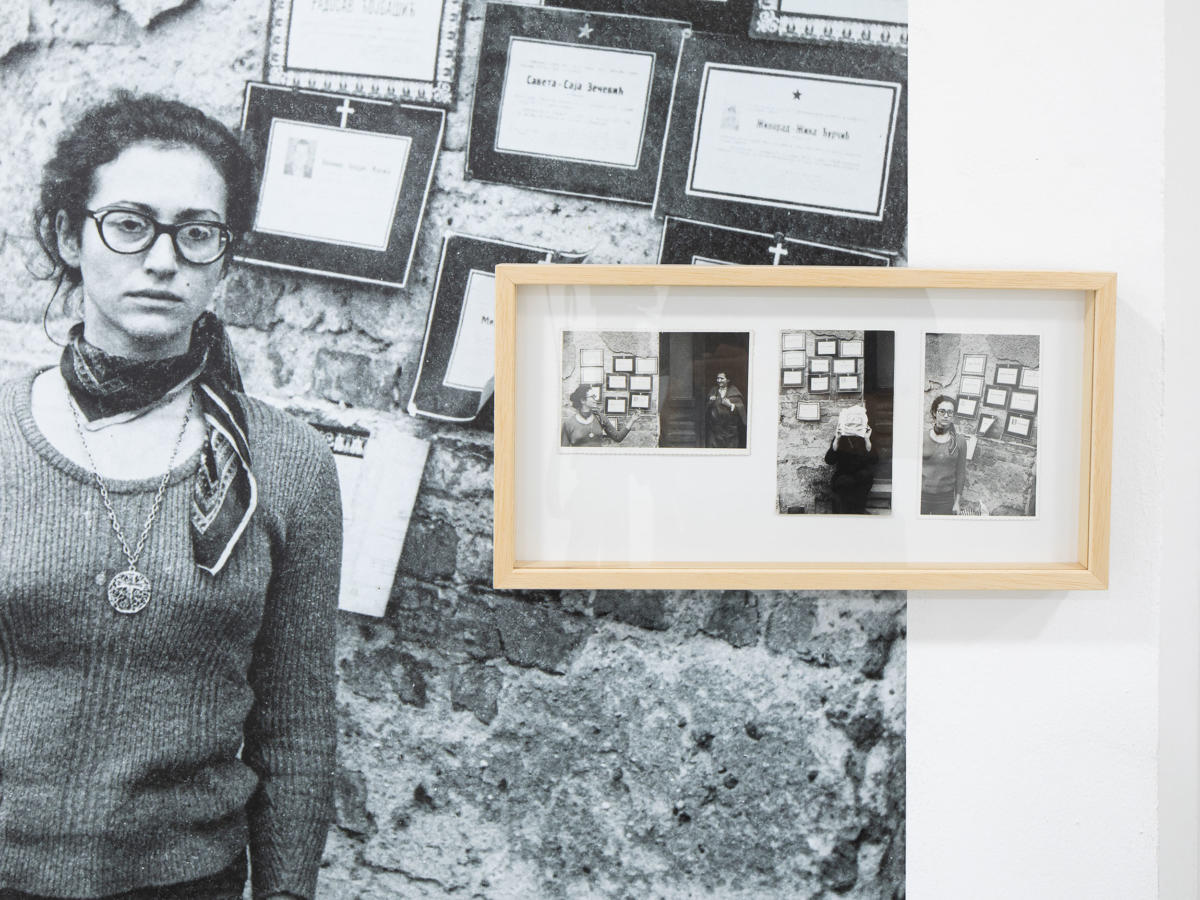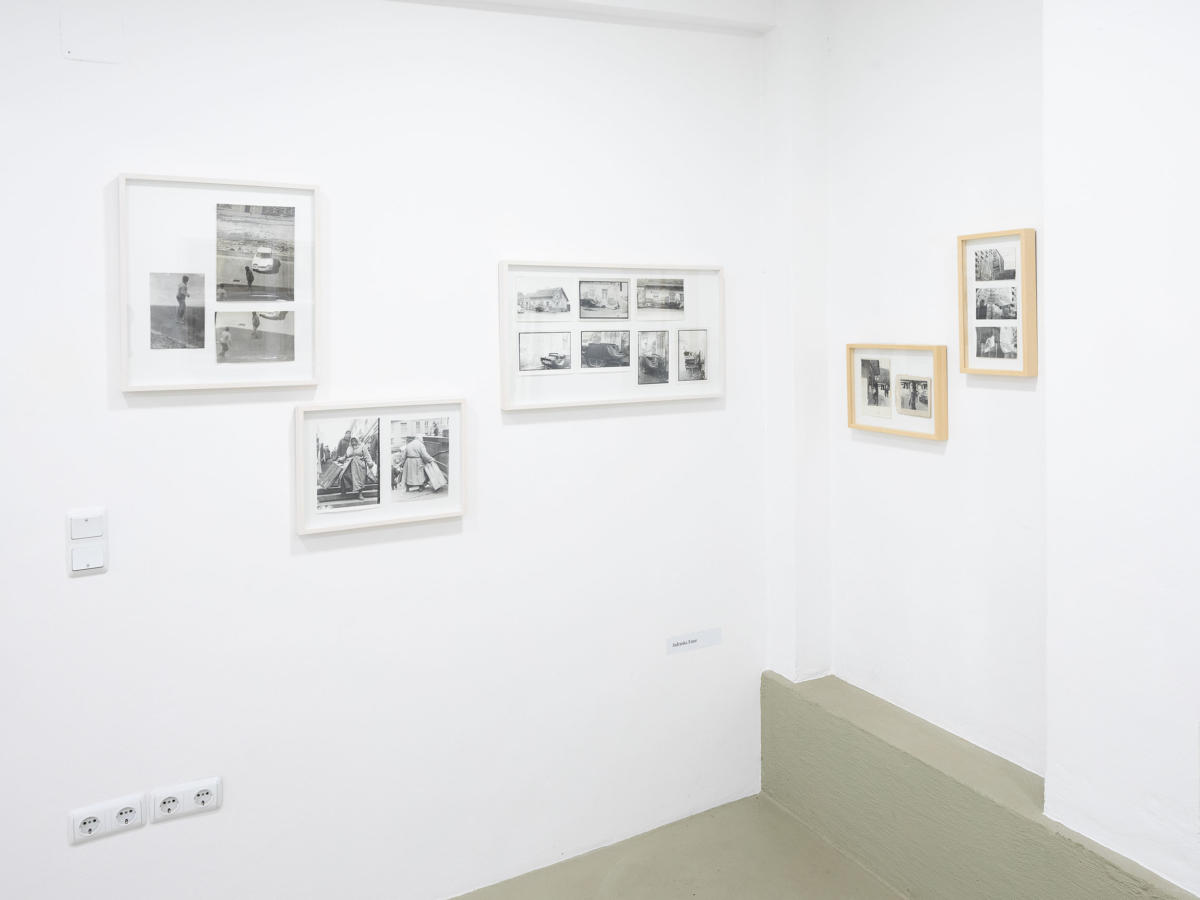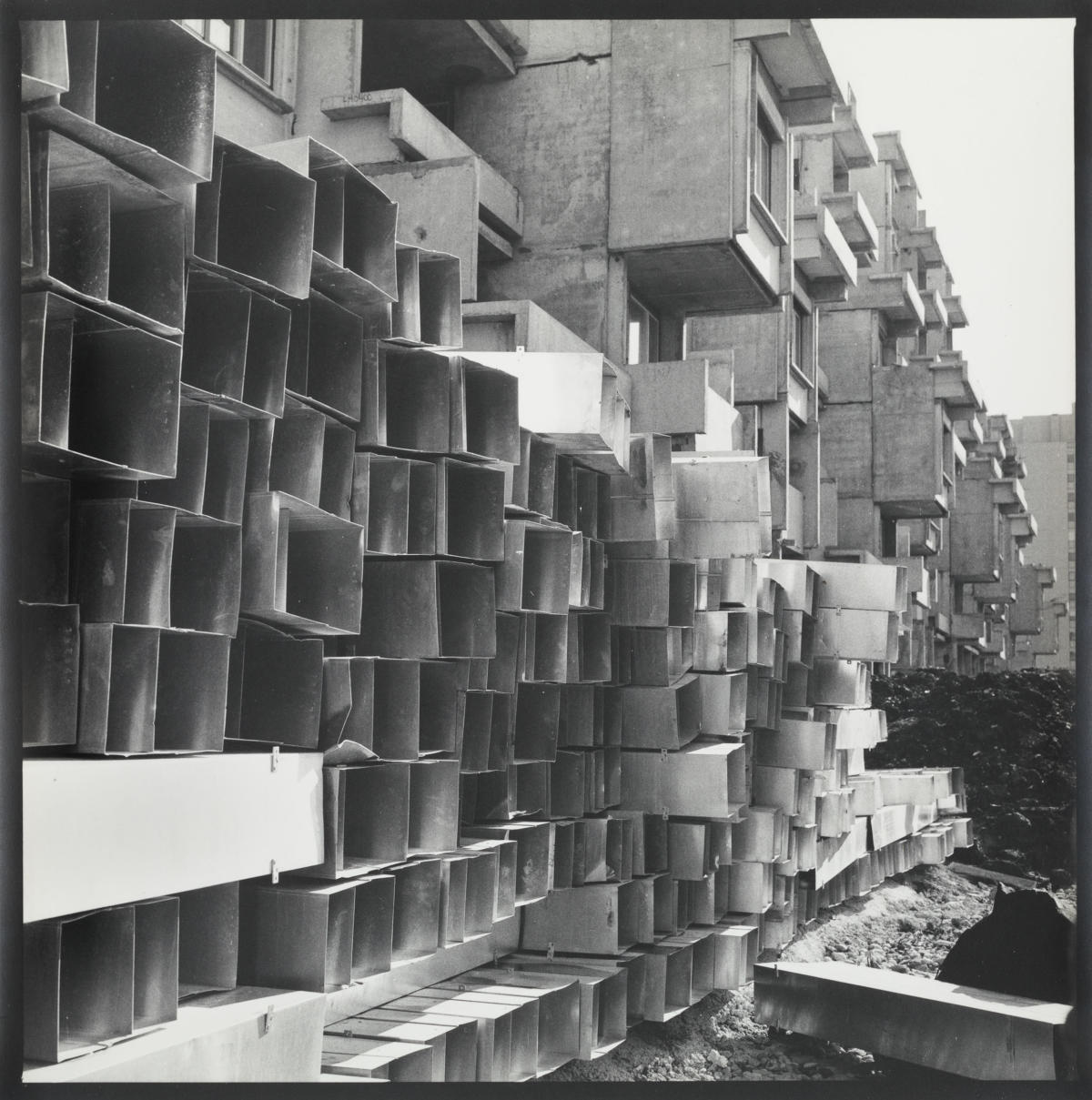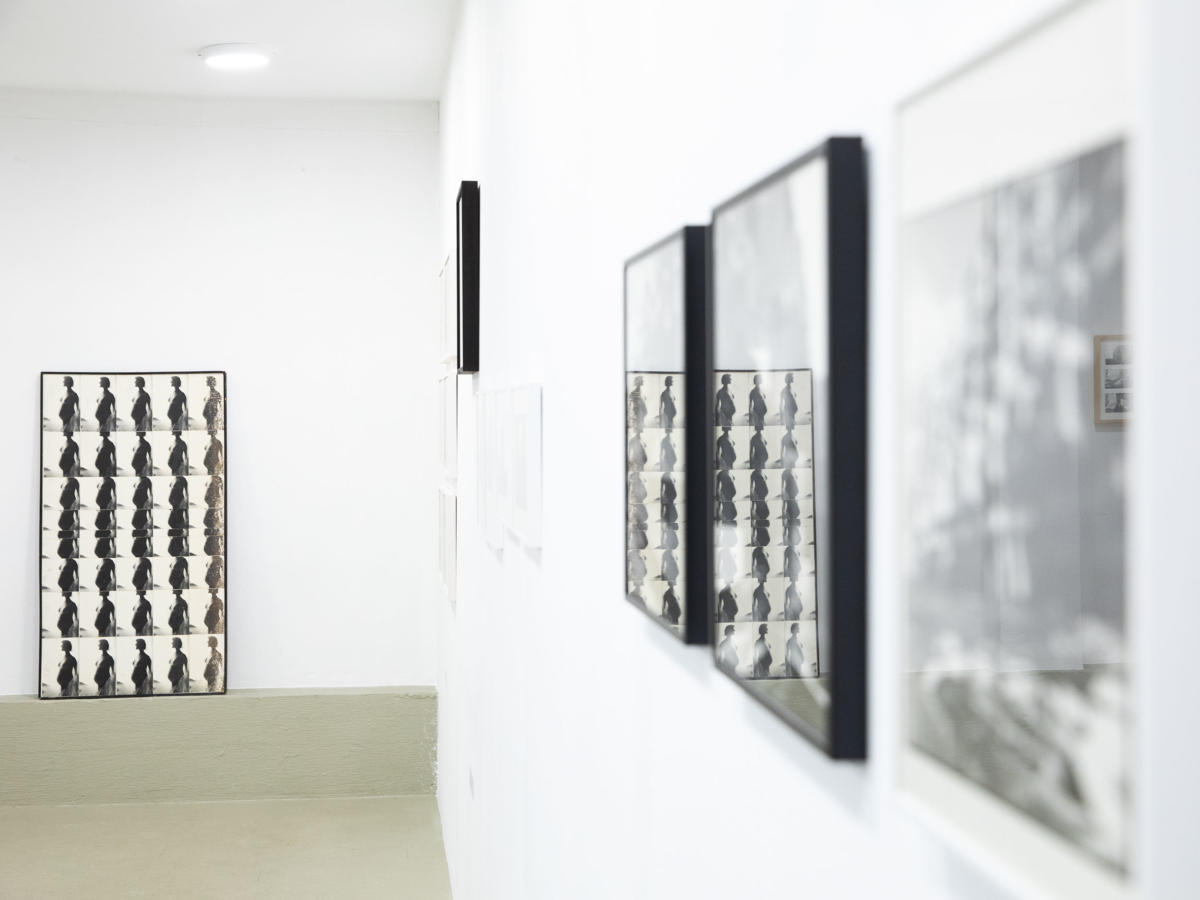![[EN/HR] ‘”Soft” Shooting?’ at Spot Gallery](http://blokmagazine.com/wp-content/uploads/2020/07/slavka-pavicxx-sava-river-motif-1970.-1200x900.jpeg)
[EN]
With the selection of Slavka Pavić’s, Erika Šmider’s, Danijela Lušin’s, Ivančica Privora-Kurtela’s and Jadranka Fatur’s works we draw attention to the topics they covered, get to know the means through which they acquired their knowledge and get to know the events which at least partially influenced and left their mark on these artist’s works.
The opening of the exhibition is the June 15th and the exhibition space will be open for visitors from 4pm to 8pm without the usual dialogue with the artists during the opening. The exhibition will be open until the September 4th, with a summer break from the July 24th to the August 17th. Apart from the exhibition itself, Office for Photography will organise an additional program, which will be open for visitors, and will also be publishing a new edition of the magazine Fototxt which will feature the leading women photographers of the exhibition.
In the history of Croatian photography there are still many topics and themes that need exploring, not to mention that the development of the medium itself is still waiting to be properly synthesised. When talking about the photography of post-war Croatia one has to acknowledge that it is severely marked by the limited opportunities for education, the underdeveloped exhibition politics and the almost complete lack of a critics scene. One of the major roles in the development of Croatia’s photography was played by amateur club photography – the so called photo clubs, particularly during the late 40s and the first half of the 50s. One of their most important functions was precisely the education of amateur photographers. It should be noted that the Photo Club Zagreb was one of the strongest in the whole of ex-Yugoslavia and played a vital part in the general technical education of the population, thus setting the foundations for the artistic work of its members. After a brief period of ideological dominance, a new sort of liberation occurred at the beginning of the 50s, allowing amateur club photography to take over. This would prove crucial for the development of women’s photography. While women photographers had worked and participated in club activities throughout the post-war period, their first collective appearance on the centre stage did not take place until 1973, when following the initiative of club president Đuro Griesbach the Women’s Section of the Photo Club was founded. Their first exhibition was organised that same year in the Gallery of Artistic Photography (Galerija umjetničke fotografije – GUF), in Zagreb, with more events to follow annually in the Zagreb City Museum on the 8th of March, the traditionally celebrated Women’s Day.
The exhibition ‘Soft’ shoooting? is not, however, meant to be a retrospective of the Women’s Section’s achievements on the national map of photography. Its primary intention is to encourage a discussion about the ways and journeys of women photographers. The first fact that needs to be acknowledged is that when it comes to the territory of ex-Yugoslavia women photographers entered the scene late and not without obstacles. The printed media were key to introducing photography into the various levels of society. While specialised photography magazines were in no short supply, the first of which having been published in Yugoslavia in 1911, most of them were devoted to technical questions – offering advice to amateur photographers and advertising new products. This state of things would continue for quite some time and the idea of women’s photography would not even begin to be considered until after World War II and even then rather sporadically and unsystematically. A handful of women photographers were active within private photography studios. Acting within the confines of a studio was considered appropriate for women, mostly due to the opinion that this type of isolation allowed for a more intense relationship with the subjects and in which women were believed to be more successful than men.
Photography was not only embraced by artists working exclusively in that field, but also by artists who were introduced to it through their education at various art schools and academies both at home and abroad. Nonetheless, it was the photo clubs who truly generated the changes that marked the period between the 1950s and 80s.
With the selection of Slavka Pavić’s, Erika Šmider’s, Danijela Lušin’s, Ivančica Privora-Kurtela’s and Jadranka Fatur’s works we draw attention to the topics they covered, get to know the means through which they acquired their knowledge and get to know the events which at least partially influenced and left their mark on these artist’s works. We will ask ourselves: is there such a thing as a critical depiction of society? What did the others say about women holding cameras? And is there even something that could be described as a “woman’s gaze”? Is the way they took their images truly “soft”, or is there no such thing as gender behind the lens? – these are the questions that the exhibition will address.
The exhibition is part of Not Yet Written Stories – Women Artists’ Archives Online, an international research project funded by Creative Europe , in which Office for Photography collaborates with the Arton Foundation in Warsaw, SCCA – Centre for Modern Art in Ljubljana and the Latvian Centre for Contemporary Art in Riga. The aim of this project is to include the works of women artists into public discourse about visual arts in order to avert their further discrimination and mostly elimination from the European history of art.
[HR]
Izborom radova Slavke Pavić, Erike Šmider, Danijele Lušin, Ivančice Privora-Kurtela i Jadranke Fatur, ukazujemo na teme kojima su se bavile, upoznajemo načine stjecanja znanja i upoznavanja sa zbivanjima unutar foto kluba koja su barem djelomično ostavila trag u njihovim opusima.
Otvorenje izložbe održat će se 15. 6., pri čemu će izložbeni prostor za posjetitelje biti otvoren od 16.00 do 20.00 sati, bez uobičajenog razgovora s umjetnicama prilikom otvorenja. Izložba će trajati do 4. 9. uz ljetnu stanku od 24.7. do 17.8. Osim same izložbe, Ured za fotografiju priredit će i dodatni program te broj časopisa Fototxt posvećen upravo fotografkinjama.
U povijesti fotografije u Hrvatskoj postoji još mnogo neistraženih tema, a i sam razvoj medija čeka svoju sintezu. Kada govorimo o poslijeratnoj fotografiji u Hrvatskoj, ona je pak u velikoj mjeri obilježena skučenim prilikama za obrazovanje, nerazvijenom izložbenom politikom i nepostojanjem kritike. Važnu ulogu za njezin razvoj, pogotovo kasnih četrdesetih i u prvoj polovini pedesetih godina, ostvarili su fotoklubovi, kojima je jedan od glavnih zadataka bilo upravo obrazovanje fotoamatera. Spomenimo, da je Fotoklub Zagreb bio jedan od najsnažnijih u bivšoj Jugoslaviji te je ostvario važnu ulogu u općem tehničkom obrazovanju stanovništva, postavivši temelj umjetničkog rada svojih članova. Nakon kratkotrajne ideološke dominacije, od početka 50-ih zapaža se otvaranje prostora slobode te prevlast klupske amaterske fotografije, a što će pokazati ključnim za razvoj ženske fotografije. Iako fotografkinje stvaraju i sudjeluju u klupskim aktivnostima u cijelom poslijeratnom periodu, njihov prvi zajednički nastup uslijedit će tek 1973. godine, kada se na inicijativu predsjednika zagrebačkog kluba Đure Griesbacha osniva Ženska sekcija. Prva izložba organizirana je iste godine u Galeriji umjetničke fotografije (GUF) u Zagrebu, dok su se kasnija izdanja godišnje održavala u Muzeju grada Zagreba, tradicionalno povezana s obilježavanjem Osmog marta.
Izložba ‘Meko’ okidanje? nije zamišljena kao retrospektiva svega što je Ženska sekcija uspjela postići na nacionalom fotografskom planu. Njome prvenstveno želimo potaknuti raspravu o načinima i putovima kako su žene djelovale fotografski, polazeći od činjenice da, kada govorimo o području bivše Jugoslavije, žene u fotografiju ulaze kasno i ne bez prepreka. Tiskani mediji bili su važno mjesto prodora fotografije u različite slojeve društva. Unatoč razvoja specijaliziranih fotografskih časopisa, koji se na području bivše Jugoslavije počinju objavljivati od 1911., većina njih uglavnom je posvećena tehničkim pitanjima, savjetima fotoamaterima i reklamiranju novih proizvoda. Takvo će stanje dugo potrajati, dok će se tema ženske fotografije početi razmatrati tek nakon Drugog svjetskog rata, a i tada tek sporadično i nesustavno. Osim toga, nekoliko žena djelovalo je u sklopu privatnih fotografskih studija. Atelijerska aktivnost smatrala se primjerenom ženama, ponajviše zbog mišljenja da je u takvoj vrsti izolacije moguće ostvariti intenzivniji odnos sa subjektima, u čemu su žene uspješnije od muškaraca.
Fotografiju nisu prigrlile isključivo autorice koje su djelovale samo u tom polju, nego i umjetnice koje ju upoznaju školovanjem na umjetničkim školama i akademijama u zemlji i inozemstvu. No ipak, upravo su fotoklubovi generatori promjena koje su obilježile razdoblje između 1950-ih i 1980-ih godina.
Izborom radova Slavke Pavić, Erike Šmider, Danijele Lušin, Ivančice Privora-Kurtela i Jadranke Fatur, ukazujemo na teme kojima su se bavile, upoznajemo načine stjecanja znanja i upoznavanja sa klupskim zbivanjima koja su barem djelomično ostavila trag u njihovim opusima. Zapitat ćemo se postoje li kritički prikazi društva, što su o ženama s kamerom u rukama govorili drugi, i postoji li uopće nešto što možemo okarakterizirati kao “ženski pogled”. Je li način kako su snimale fotografije uistinu “mekan”, ili iza objektiva ne postoje rodne razlike?
Izložba je dio Arhiva umjetnica na mreži (Not Yet Written Stories – Women Artists’ Archives Online), međunarodnog istraživačkog projekta financiranog sredstvima Kreativne Europe, u kojem Ured za fotografiju surađuje s Fundacijom Arton iz Varšave, SCCA – Centrom za suvremenu umjetnost iz Ljubljane i Latvijskim centrom za suvremenu umjetnost, baze podataka umjetnika i arhive iz Rige. Cilj projekta je uključiti djela umjetnica u javni diskurs o vizualnim umjetnostima, kako bi se izbjegla daljnja diskriminacija umjetnica, većinom eliminiranih iz europske povijesti umjetnosti.
Imprint
| Artist | Slavka Pavić, Erika Šmider, Danijela Lušin, Ivančica Privora-Kurtela, Jadranka Fatur |
| Exhibition | 'Soft' Shooting? |
| Place / venue | Spot Gallery, Zagreb |
| Dates | 15 June – 4 September 2020 |
| Curated by | Sandra Križić Roban, Sara Simić (assistant) |
| Index | Danijela Lušin Erika Šmider Ivančica Privora-Kurtela Jadranka Fatur Sandra Križić Roban Sara Simić Slavka Pavić |









